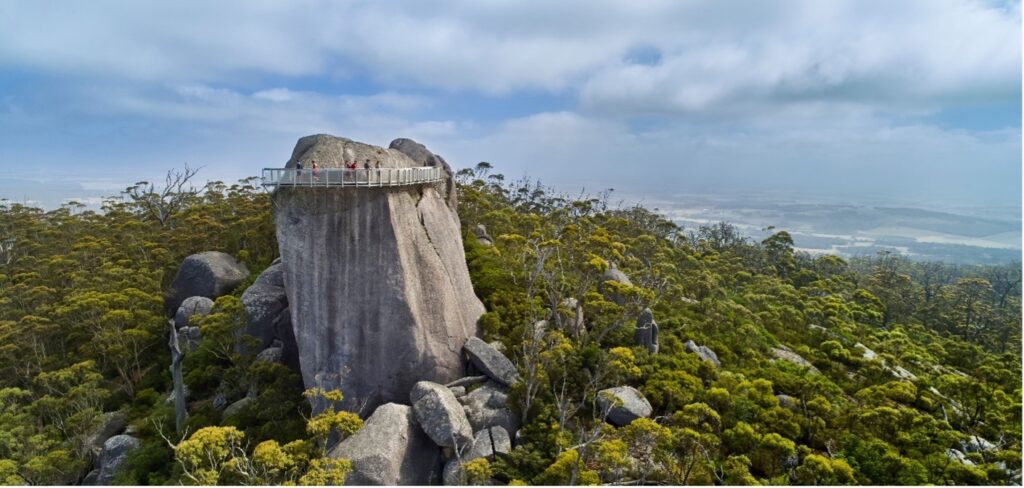“The Porongurup region in the Great Southern of WA is highly regarded for its capacity to produce riesling of precision and drive. Castle Rock and winemaker and vigneron Rob Diletti have ridden that wave from the beginning, with other producers seeking out Rob’s winemaking prowess to give their riesling fruit every chance of flourishing in the bottle.”
The Real Review, Nick Butler
Renowned for its awesome natural beauty, wildflowers, colourful local characters and a huge variety of natural sightseeing attractions, Porongurup is home to the oldest mountain range in the world.
Porongurup is the smallest of the five sub-regions making up Australia’s largest wine growing region, the Great Southern. It is ideally suited for premium cool climate wine grape production. The subregion is 40 km north of Albany and encompasses the entire 12km long Porongurup Range, featuring luxuriant Karri forests and views of the Stirling Range to the north.

Wine grape production in the Porongurup began with plantings of Riesling and Cabernet Sauvignon in 1978. Since then, around ten vineyards have situated themselves on the sunny northern slopes of the range.

The Porongurup boasts a unique climate due to its aspect and height above sea level (670m at its highest point), creating a nocturnal thermal zone due to warm air rising above denser cold air sliding down the hillsides. The conditions produced from this air drainage are ideal for ripening and reduces the risk of frost.
Consisting of geomorphic granite, the Porongurup displays a variety of soil types, with Karri Loams and well drained Gravel Loams being the most productive for wine grapes.
The combination of climate and site has built a reputation for distinct cool climate wines; Riesling, Chardonnay and Pinot Noir being standout varietals, with Shiraz, Cabernet Sauvignon and Sauvignon Blanc grown with success.

A taste of the Region:
- Follow the Flavours of the Porongurup Range Trail
- The Stirling Range National Park is a short drive away, with the highest peak in south-western Australia, “Bluff Knoll” at 1095 meters above sea level.
- Wildflowers – Every Spring, from August through to November, the south-west of Western Australia comes alive with wildflowers. The region has been named one of the world’s 34 global biodiversity hotspots. With an estimated 8,000 plant species, including around 300 species of delicate orchids, many of which cannot be found anywhere else on earth.
